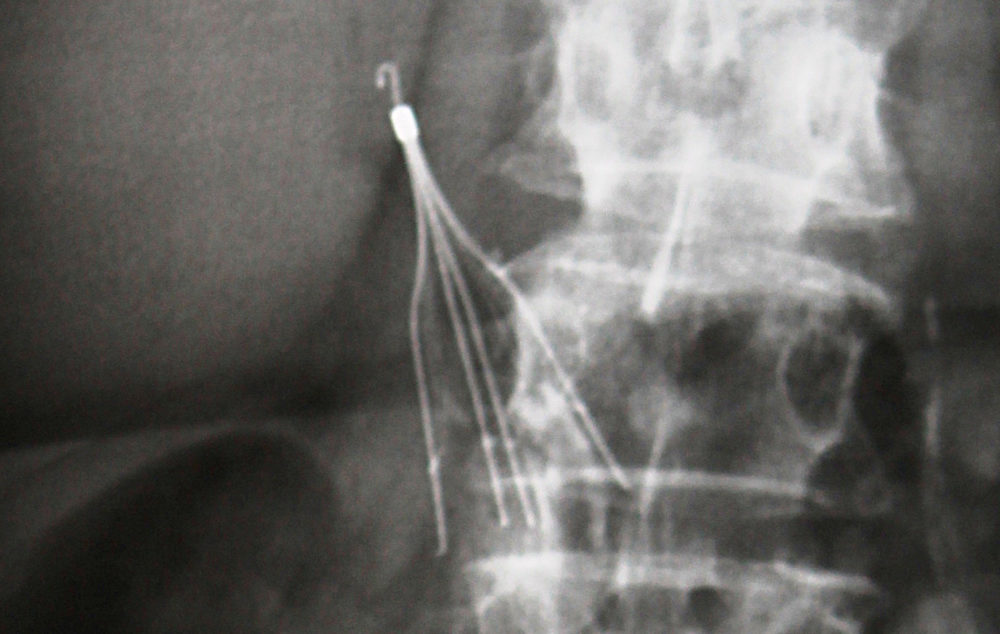IVC Filter Long-Term Risks May Negate Benefits, Researchers Say

A group of French researchers are standing by findings that suggest the long-term risks with inferior vena cava (IVC) filters may negate the potential benefit over other treatments available to help patients prevent blood clots from traveling to the lungs.
IVC filters are small devices implanted into the vena cava for individuals at risk of suffering a pulmonary embolism. However, serious questions have emerged in recent years about the long-term IVC filter risks and whether the devices provided sufficient benefit for patients to justify the widespread use.
In response to a letter published in the Journal of the American Medical Association (JAMA) on August 18, researchers defended conclusions drawn by a prior IVC filter study published in April.

Learn More About
Design Problems with Certain IVC Filters Linked to Severe Injuries. Lawsuits Reviewed Nationwide.
Learn More About this Lawsuit See If You Qualify For CompensationThe original study found that patients who receive an IVC filter may be twice as likely to suffer a pulmonary embolism than those who were prescribed blood thinners alone, leading researchers to recommended that IVC filters not be used in patients who could be treated with anticoagulants.
A letter submitted to the journal by Dr. Eric K. Hoffer, from Dartmouth-Hitchcock Medical Center in New Hampshire, questioned the findings that the IVC filters lack long-term benefit. Hoffer suggested that the absence of detectable benefit might be due to the study’s short three-month duration and said other studies have suggested that the benefits of an IVC filter only appeared after about a year.
In the response published with the letter, the researchers who conducted the study acknowledged that previous studies have shown some long-term benefits with IVC filters, but noted that “this beneficial effect was counterbalanced by an increased risk of lower-limb deep venous thrombosis, including filter thromboses, even though 50% of the patients were still receiving anticoagulant treatment.”
The researchers said that these problems meant that IVC filters were not linked to an overall long-term decrease in the risk of recurrent venous thromboembolism injuries. They also noted that earlier studies were conducted before patients were put on anticoagulants indefinitely, which has resulted in much more favorable long-term benefits from the use of the blood thinners.
IVC Filter Risks
In recent years, removable IVC filters have been the subject of much debate within the medical community, after a patients have suffered severe injury when the devices perforated the vena cava, migrated out of position or fractured, causing small fragments to travel to the heart or lungs.
In August 2010, the FDA issued a warning about the potential IVC filter risks, indicating that more than 900 adverse event reports had been received, and that the risk of problems may be higher the longer the device is left in place.
In April 2012, a study published in the medical journal Cardiovascular Interventional Radiology indicated that nearly 100% of Cook Celect and Gunther Tulip IVC filters perforated patients’ venal cava wall within 71 days of being implanted. The study also found that 40% of the filters became tilted and out of position.
A study published in the medical journal JAMA Internal Medicine in March 2013 raised questions about the effectiveness of IVC filters, indicating that less than 10% of filters evaluated in the study were successfully removed from patients and 8% of recipients of IVC filters suffered a pulmonary embolism despite the device’s presence.
In May 2014, the FDA urged doctors to remove IVC filters within about one to two months after the risk of a pulmonary embolism has passed, suggesting that many doctors were not adequately warned about the importance of retrieving the devices.
A growing number of patients are now pursuing lawsuits over certain brands that are allegedly prone to problems, including the Bard G2 filter, Bard Recovery filter and Cook IVC filters.
Since October 2014, all Cook Celect lawsuits and Cook Gunther Tulip lawsuits have been consolidated in the federal court system as part of an MDL, or multidistrict litigation, which is centralized for pretrial proceedings before U.S. District Judge Richard L. Young in the Southern District of Indiana.
Earlier this week, similar consolidated proceedings were established for all Bard IVC filter lawsuits, centralizing the cases before U.S. District Judge David G. Campbell in the District of Arizona.
As part of the coordinated pretrial litigation for cases against each manufacturer, it is expected that a series of early trial dates will be scheduled to help the parties gauge how juries will respond to certain evidence and testimony over the long-term risks associated with the IVC filters. While the outcomes of these test trials will not be binding on other cases, it may facilitate IVC filter settlement negotiations to avoid the need for hundreds of individual trials to be held throughout the U.S.
Get more articles like this sent directly to your inbox.
"*" indicates required fields






0 Comments